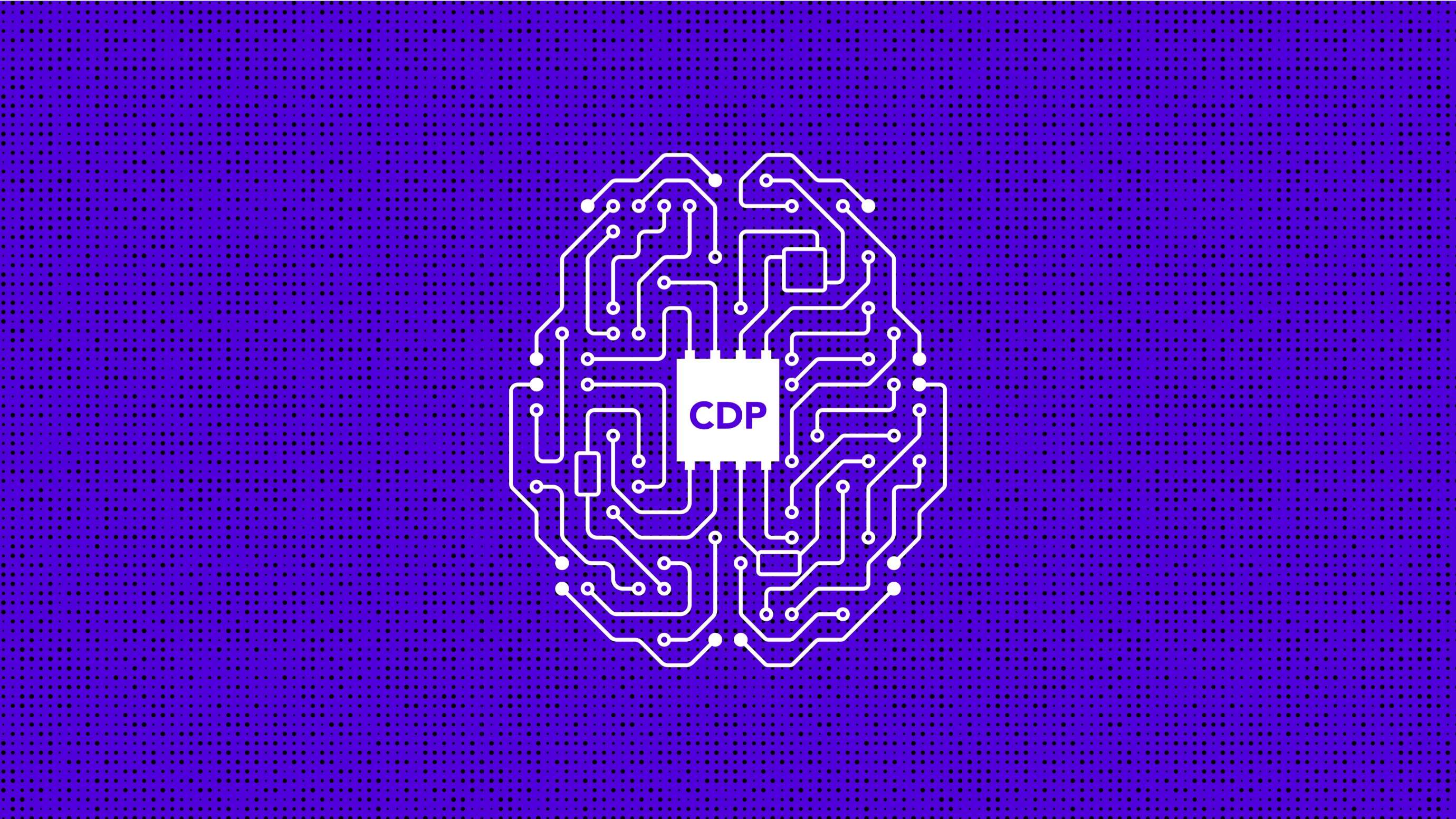
On the road to customer centricity: the role of customer data platforms
Everyone should know how important data is by now. But how do I make the best use of my customers' data and which solution is the best for me among all the buzzwords and tools on the market? You are probably not the only one facing the challenge of answering this question. First-party data is becoming increasingly important, especially in light of the fact that third-party data is virtually no longer available. One solution that has become increasingly important in recent years is the Customer Data Platform, or CDP for short.
A customer data platform enables you to collect, process and use all of your customers' information from various online and offline sources to develop a comprehensive understanding of your target group. These platforms integrate data from various channels such as websites, social media, mobile apps, email marketing and much more.
Advantages, best practices and potential of the Customer Data Platform (CDP)
The implementation of a Customer Data Platform (CDP) offers you numerous advantages for your operational and strategic business. Here are some of the key benefits, best practices and potentials of a CDP:
Benefits
360-degree customer view: By integrating data from different channels, a CDP enables a holistic view of each of your customers. This allows you to develop a deeper understanding of their needs and preferences.
Personalized marketing campaigns: With a CDP, you can develop personalized marketing campaigns based on individual interests and behaviors. This results in more relevant messages and improved customer engagement.
Effective customer management: A CDP facilitates customer management by helping you to maintain and improve relationships with your customers. By analyzing their behaviour, you can carry out more targeted interactions and increase the satisfaction of your users.
Automatic data protection: A CDP automatically ensures compliance with data protection guidelines by deleting redundant data, anonymizing personal information or marking it as confidential. This applies in particular to sensitive data, such as payment information between online stores and payment service providers. By securely processing and storing this data, the platform strengthens trust in you and promotes long-term loyalty.
Best practices and use cases
Segmentation and target group analysis: A proven method for using a CDP is to divide customers into different segments and carry out target group analyses. On this basis, companies can create more targeted marketing campaigns and use their resources more efficiently.
Real-time personalization: A CDP enables companies to provide personalized content in real time. For example, website users can receive individual recommendations based on their previous behavior, resulting in an improved user experience and higher conversion rates.
Cross-channel attribution: By integrating data from different channels, a CDP enables more precise attribution of marketing activities. This allows companies to better understand which channels are most effective and adapt their marketing strategies accordingly.
Potential
Comprehensive understanding of your customers: A CDP offers you the opportunity to develop a comprehensive understanding of your users, including their preferences, purchase history and interactions with your brand. This helps you to better tailor your products and services to the needs of your customers.
Optimization of the customer journey: By analysing user behaviour along the customer journey, you can identify weak points and optimize your marketing and sales processes. A CDP helps you to create personalized touchpoints along the entire customer journey and improve interactions with your customers.
Competitive advantage: Companies that use a CDP effectively have a clear competitive advantage in the market. They can provide personalized experiences that lead to higher satisfaction and loyalty, as well as continuously optimize their marketing strategies to achieve the best results.
Overall, the use of a customer data platform offers you numerous advantages and potentials aimed at sustainably improving your customer experience, optimizing your marketing strategies and building long-term relationships. By implementing best practices, you can realize the full potential of a CDP and achieve a sustainable competitive advantage.
CDP vs. DMP: Understanding the differences to make the right choice
Alongside a Customer Data Platform, the term Data Management Platform, or DMP for short, is often used, which at first glance appears similar but actually has very different functions and purposes.
To make an informed decision about which platform is best suited to your individual needs, it is important to understand the differences between the two.
A DMP is primarily designed to collect, store and organize large amounts of data to be used for digital marketing and advertising. DMPs often focus on anonymized data that can be used to identify target audiences and target advertising campaigns. They collect data from various sources such as websites, mobile apps and external data providers and allow you to segment this data and use it for targeted advertising to a broad audience. The focus here is on unknown customers and prospects.
In contrast, CDPs are designed to collect and use personal and identifiable information to develop a deeper understanding of customers' individual preferences, needs and behaviors. They allow you to get a single view, regardless of the channels through which they interact with you, and develop personalized marketing campaigns based on this understanding.
Overall, both a customer data platform and a data management platform can be valuable tools for you to manage and utilize your data. Deciding which platform is best for you, or whether it makes sense to combine the two, depends on your specific goals, requirements and resources. While DMPs focus on aggregating and using anonymized data for advertising targeting, CDPs provide a holistic view of customers and allow you to create personalized and relevant interactions.

Making the right choice: Tips for choosing a customer data platform
Now that we have clarified what a CDP is, what it is used for and how to differentiate it from a DMP, the question arises as to which CDP is the right one.
Choosing a suitable CDP is a crucial step if you want to optimize your customer relationship management and develop personalized marketing strategies. With so many providers and options on the market, the decision can be overwhelming. Here are some key criteria to consider when choosing a CDP, as well as some differences between providers:
Data integration and management:
An effective CDP should be able to seamlessly integrate and manage data from multiple sources such as websites, mobile apps, CRM systems and third-party vendors.
Make sure the platform is flexible enough to scale with your organization's changing needs and data sources.
Customer centricity and individual customer view:
One of the main functions of a CDP is to create a unified view of each individual customer. Ensure that the platform can create personalized customer profiles and enable individual interactions.
Look into user behavior segmentation and analysis features to ensure you can gain valuable insights.
Data protection and compliance:
With rising concerns about data privacy and compliance, it is important that the CDP offers robust security measures and complies with applicable regulations such as GDPR.
Ask about certifications and security standards, as well as the ability to implement your organization's privacy policies in the platform.
Real-time capability and scalability:
For companies that rely on real-time interactions with users, the ability of a CDP to process and utilize data in real time is critical.
Consider the scalability of the platform to ensure that it can keep pace with the growth of your business without sacrificing performance or functionality.
User-friendliness and integration:
A user-friendly interface and easy integration with other business systems are important factors that can influence the adoption and success of a CDP.
Check whether the platform offers APIs and integrations with common marketing and CRM tools to enable seamless workflows.
The differences between the providers
The variety of CDP providers can differ in their focus and functions. Some may place more emphasis on specific industries or company sizes, while others may focus on specific functions such as machine learning or predictive analytics.
Pricing models and service offerings may also vary. Some providers may offer packages with pre-built features, while others allow for more customization and consulting.
When choosing a CDP, it's important to consider your specific needs and goals and carefully evaluate different providers. A thorough comparison based on the above criteria can help you make the right decision for your business and get the maximum value from your customer data platform.
With our technical expertise and experience, we are happy to help you identify the right CDP for your specific requirements and goals. From analyzing your data integration and management to ensuring data protection and compliance, we are at your side with tailor-made solutions. Contact us to find the optimal CDP solution for your company and realize the full potential of your customer data.